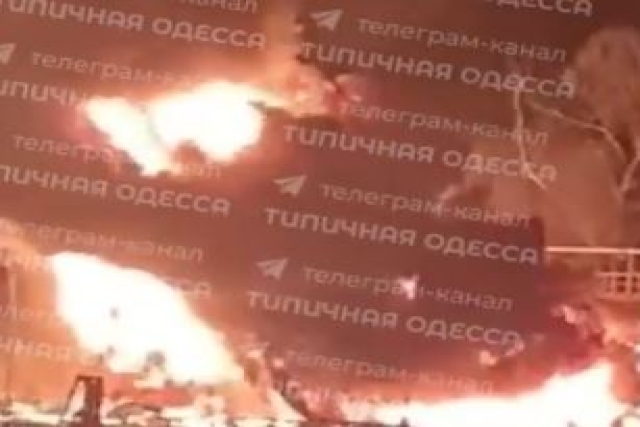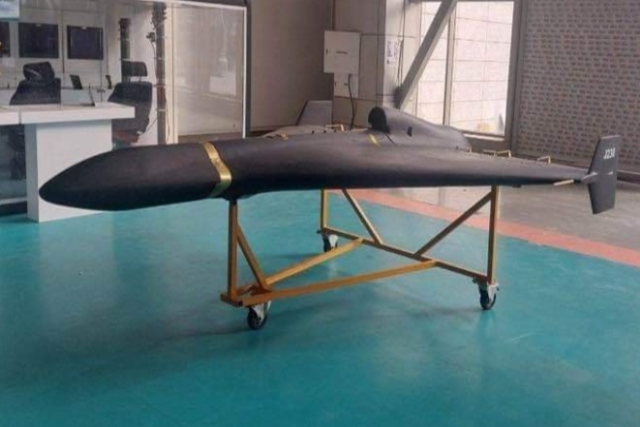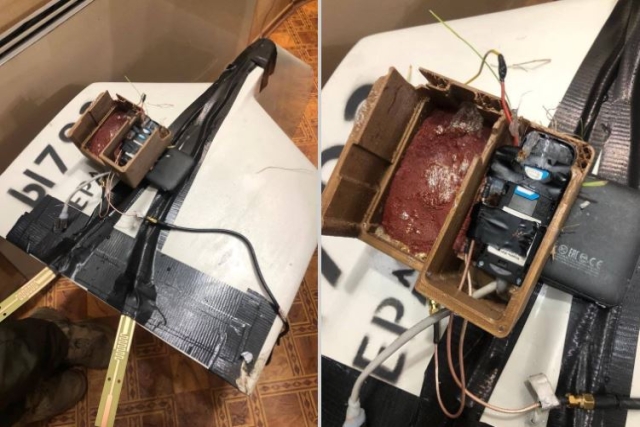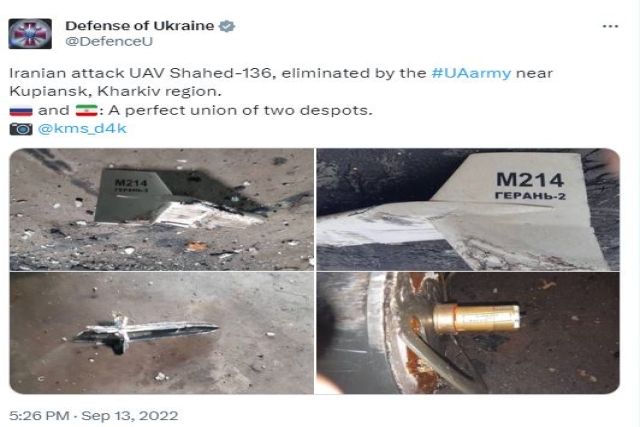Improved Iranian Kamikaze Drones Used in Devastating Attack on Ukraine
The Geran-2 drones, based on the Iranian Shahed-136, have been modified with Russian components and technology

Russia has deployed an upgraded version of the Geran-2 kamikaze drone in an attack on the port of Izmail in the Odessa region.
The strike involved at least ten low-observable drones targeting key infrastructure, as shown in footage shared by the Russian Arms Telegram channel.
The nighttime operation reportedly damaged fuel tanks, transport vehicles, and an administrative building, injuring at least 32 foreign personnel.
The Geran-2 drones, based on the Iranian Shahed-136, have been modified with Russian components and technology, reflecting Moscow's capability to produce these drones domestically.

The Geran-2 is equipped with a Russian-developed "Kometa-M" electronic countermeasures unit, designed to protect its GLONASS/GPS modules from interference. This feature effectively counters L-band electronic countermeasures employed by Ukrainian forces, demonstrating the drone's resilience and shielding.
Russia began manufacturing these drones domestically about a year ago, utilizing both foreign and local components. Investigations by Conflict Armament Research (CAR) documented over 100 components from more than 30 unique models across two Geran-2 drones. These parts bear the brands of companies based in seven countries, including China, Switzerland, and the United States, with some components manufactured after the full-scale invasion of Ukraine in February 2022.
CAR's analysis indicates that Russia has adapted the design principles of the Shahed-136 while streamlining its functions. The Geran-2 features a fibreglass outer shell with carbon fiber reinforcement, combining new solutions with battle-tested modules like the Kometa.
CAR's findings highlight significant differences in the airframe and internal units compared to the original Shahed series, suggesting a focus on enhancing performance and production efficiency.

The airframe construction of the Russian Geran-2 differs significantly from its Iranian counterpart, utilizing a fibreglass outer shell reinforced with carbon fiber. In contrast, the Iranian model employs different materials in its construction. Furthermore, the internal units of the Russian version are more integrated, featuring advanced navigation and control systems such as the "B-105" satellite navigation unit and the "B-101" flight control unit, which combine functions that are separate in the Iranian Shahed-136.
Additionally, the Geran-2 incorporates Russian-made "Kometa" modules for enhanced electronic countermeasures, a feature not found in the original Shahed design. Lastly, a notable difference lies in the production origin, as many components in the Russian version bear foreign company marks, indicating a mix of international parts, whereas Iran's version is domestically produced.













